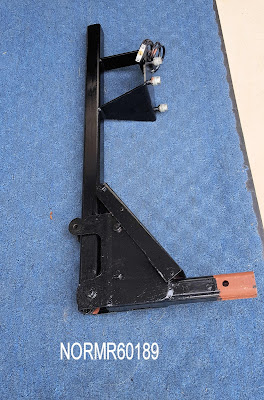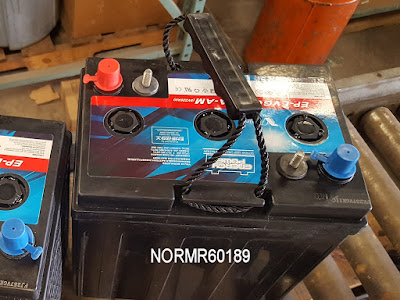
"Living the RV Dream, "Full Time RVing", "RV Boondocking", RV Solar Living" "Fifth Wheel" living, "RVers on the Road" and the list goes on.
There are many expectations for RV living and lots of social media groups which provide insights and opinions. There are also many ways to live the RV lifestyle, as many as there are RVs on the road. This is not a "one size fits all" situation. For example, we trek in a Class B (Roadtrek 210P). Since December 2013 we've trekked nearly 22,000 miles in it with some treks of up to 110 days (90 days interrupted by an overnight hotel stay in Bisbee AZ). We think of the 210P as our mobile motel room and our gateway to the outdoors. It is very comfortable. But we have friends who simply cannot grasp why we would do this. Some are tied to their abode and the big city they live in. Others have tried country living and hated it; (think "Green Acres"). Others had a short RV experience with their children in tow and after about two weeks in a metal can had enough of the "camping" adventure. Some need the internet and cable TV and don't want to pay the price to get these on the road. And of course, some have work, job or family commitments and simply can't get away.
Obviously, this lifestyle is not for everyone and there are different lifestyles to pursue. That is my point. For every hearty endorsement of the RV lifestyle and experience, there may be an opposing view. Which is why there is a "full time RV Hell" social group. Which makes me wonder. RVs are mobile and so if one doesn't like their current location, then move on. If the rig is a piece of junk, then move on.
Some call their rigs "tiny homes" and some call them "candominiums."
Flexibility is Helpful
We've taken a somewhat flexible approach and while it seems there are periods of imperfection, it is also true that everything is "perfectly imperfect." Yes, it can be darn good. We do enjoy the great outdoors, truck stops, resorts, National Parks and meeting new people. We also enjoy a lot of space. That might seem oxymoronic, because our Class B is such a tiny, tiny home. However, when we open that side door we step into the great outdoors. In fact, that experience is what convinced G that she really wanted to do this. She tells me she'll never forget opening the side door on a trek through Canyonlands National Park and looking at the vista. We were in a small area legally adjacent to the road and overlooking the canyons. We were enjoying lunch. We had a vista of at least 15 miles with no one in our view; just the canyons and bluffs to the horizon.
 |
| Hiking in Canyonlands National Park |
 |
| Canyonlands at Sunset - don't step back! |
 |
| On the edge at Canyonlands, contemplating the far horizon |
Open that side door at 5:30am as we did one morning and we had a different experience, at 9F. When we encounter such experiences we are usually just "passing through" and there is better weather just over the horizon. If not, we then continue moving.
We found better weather and when the day was done we retreated indoors and had another comfy night.
We can choose where and when to stop. We're not locked into any one location. Nevertheless, we do camp in weather extremes. I do think we've pushed the limits in the Roadtrek with outdoor temps from about 5F to over 100F and some really long treks. Some might consider this "extreme RVing" as one person described our approach. Furthermore most RVs are not designed for full time living. That requires some tolerance and understanding on the part of the occupants. Not everyone is going to be satisfied with RV living.
There are Differing Experiences
Some of us aren't ready to live this way, and each vehicle may provide a different experience. We tried a 19 foot Sprinter based rig with solar and all electric (no propane). We did this because we wanted the experience before making a purchase decision for any RV. We decided it wouldn't work for the longer treks we were planning and to the locations in mind. How long? 3 months or more. On the other hand, even the 19 footer was luxury compared to the backpacking and ground camping I've done. Back then it was a sleeping bag and a plastic potty bag inside the tent when it was really cold outside. The slogan while packing and planning what to carry was "an ounce in the morning is a pound at night." Today we can bring BBQ, lawn chairs, stuff the 5 cu. ft. refrigerator, carry sufficient supplies for weeks and so on. It has been a very different experience in the RVs.
My personal history influences my perspectives. I've lived for months on end in a variety of motels. This was required by my work. For one project I lived in a motel for 11 months. For another it was 5 months. Then there have been dozens of trips of 30 days or so and even more of 5 days or so. My first such business trip was 50 years ago. My next will be in a few weeks. While motels come with clean towels and daily service, I still prefer the Roadtrek and I do much of the cooking, etc. We use a convection/microwave, a propane range, propane BBQ and an electric induction burner with cast iron. We have multiple heat sources including a heat pump, propane furnace and electric heater. There is an air conditioner for summer, and a two fans for ventilation and cooling.
However, living in a our mobile motel room does have challenges. I've written of this before. Every time one opens the door the elements come in. Do that in a driving rain and the humidity inside will become higher than that outside. Class Bs have a lot of glass and that glass has an R-value of about 0.1, which is almost nothing. Even Reflectix has an R-Value of about 1.0 or ten times better. If your rig has solar panels then you will be parking in the sun to get that wonderful bounty of "free" energy. That's fine at temperatures below 75F. But as the temperatures rise that rig becomes a sauna.
A Hybrid Balance
We have taken a hybrid approach. We follow the sun, hopping from home bases, which are stationary rigs positioned in AZ and MI. One is at a small campground in a wonderful area on the eastern shore of Lake Michigan. We're 2 hours from Chicago, or can easily go the the UP. The other is in a resort community in a winter area we decided we really like. These are our home bases and we can come and go as we please. There are other approaches. One can also own a condo and use it part time, or rent it to others with the anticipation of someday returning to a fully stationary lifestyle. We are currently hedging our bet with a condo.
However, if I wanted the absolute lowest cost with some amenities, I would seriously consider a Casita travel trailer or similar. The 16 foot Deluxe has a dry weight of just over 2,000 lbs. It can be towed by just about any vehicle with a Class II hitch and is comfortable for two, but can sleep up to six. One can park it just about anywhere and that means cheap living.
We opted for a B because we wanted a self contained unit, something we could drive everyday if we wanted to. I do admit at 21 ft. our rig is pushing the limits and it does stand out. Not exactly stealth trekking. But is has a lot of space and all of the amenities we required for trekking 90 days at a time.
For full time vehicle use, a 19 ft. Class B is probably optimal, but there are serious space compromises.
"Candominium" Living
We don't want to live in the Roadtrek full time. So what choices are there? One can find a resort with used Park models. These are really "tiny homes" and we did consider that. These are permanent and require renting a site for an annual fee. Some are really lovely with expansive covered decks, air conditioned adjacent rooms (insulated prefab buildings) and so on. Some have space for a small RV too. However, resorts do have rules about one RV only on a site. They don't allow two occupied RVs in a location designed for one. A Class B which can be used for daily travel is acceptable at such resorts.
We checked out a number of used Park models for sale. We can see why this is a popular approach. These predate the 'tiny home' movement by about 40 years. They are in many ways superior to some of the tiny homes we've seen. One drawback to the Park model is they are not really "portable". The possible issues for a Park model include:
- Age restrictions in the community (55+, for example)
- Age demographics (A 55+ community may have a very large percentage of those aged 80)
- Resort finances (A resort may have financial issues)
- Rules and Regulations (These may be restrictive and not to your liking)
- A lack of mobility (If you decide you would prefer to move to another resort, you will have to find a buyer for your Park model).
Of course, one can always purchase a travel trailer (TT) or a 5th wheel and put it on a site. That mitigates many of the problems of a Park model; if one decided they would prefer another resort, they can have their RV hauled elsewhere even if they don't own a truck.
Continued in Part 2






























